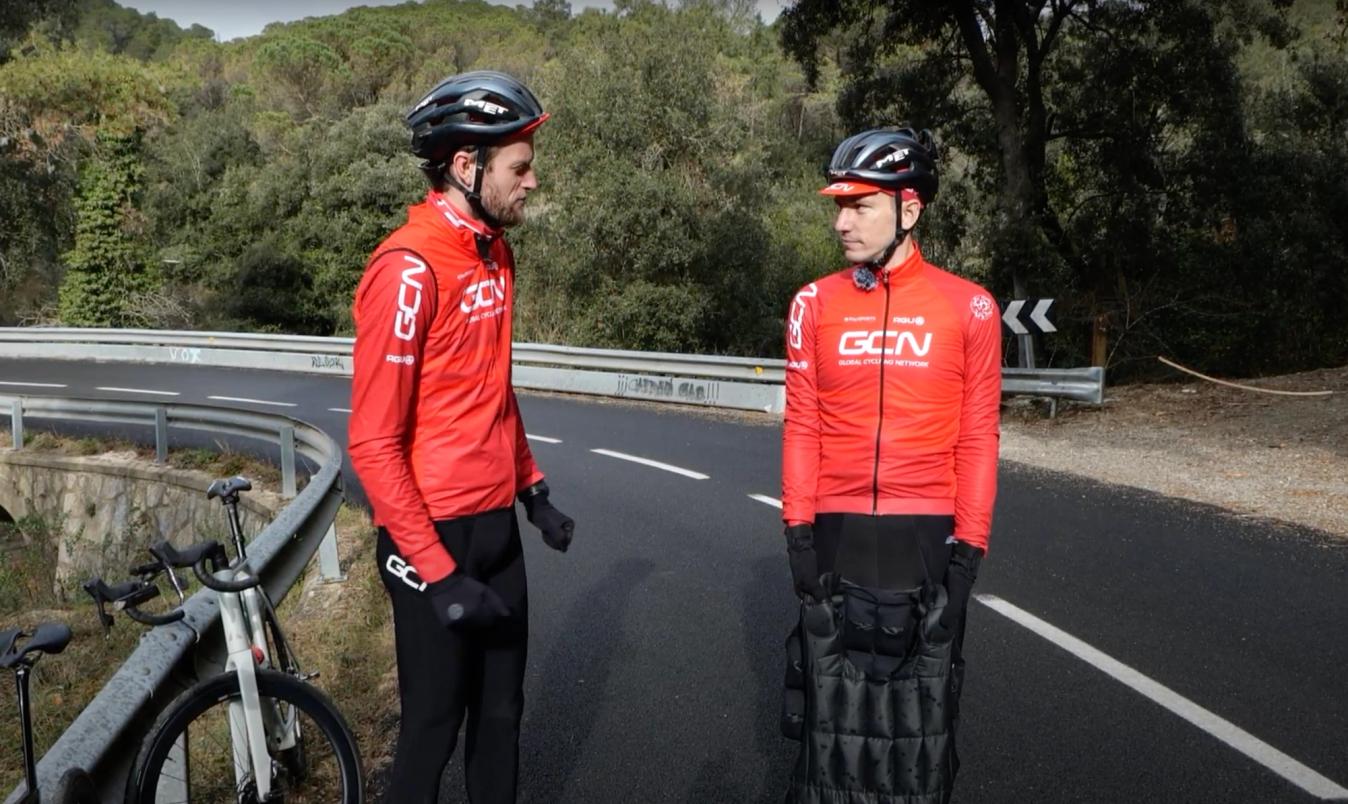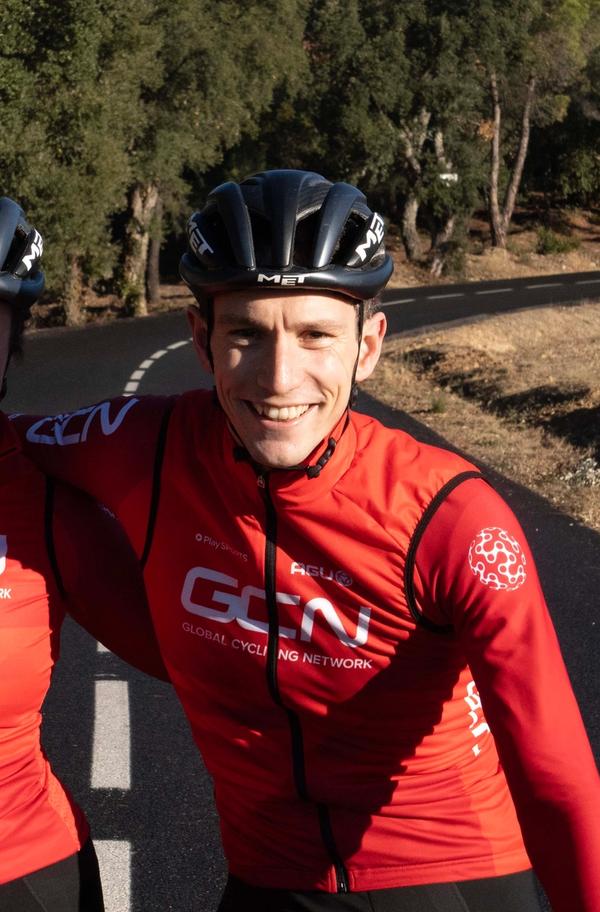Do heavier riders really descend faster?
You might think that the heavier the rider, the faster they're likely to descend but is this actually the case? Si Richardson and Conor Dunne decided to test the theory out on the road
Alex Hunt
Junior Tech Writer
From Si and Conor’s admittedly slightly sketchy scientific research they have concluded that the heavier an object is, the faster it should descend because it has greater kinetic energy. An object with greater mass should have more energy to overcome the slowing effect of air resistance meaning… heavier cyclists descend faster. But do they? Let’s find out.
In order to carry out this highly scientific experiment the guys have enlisted the help of a 25kg weight vest and a rather large hill. The only thing left to decide is who is going to wear it on the ascent…
- Read more: Five common descending mistakes to avoid
The premise of the test
After hauling the weight vest to the top of the climb, the idea behind the test is fairly straightforward. From a clearly defined white marking on the road, both Conor and Si are going to descend as fast as they can without pedalling to the bottom of the climb. Knowing the distance and the time it took them will allow them to calculate their average speed.

© GCN
The boys aim to find out if adding a 25kg weight vest has any impact on their descending speed
Both Si and Conor will complete two runs down the mountain, one with a 25kg weight vest on and one as they would normally ride. To try and make things as accurate and repeatable as possible they will be using a fixed body position in the drops.
How does the increase in weight change the perception of speed?
After Si first run wearing the weight vest he believed there was a noticeable difference in the feel of the speed. The sense of speed on a descent comes not only from the actual speed you travel but also the sensations that you feel as a result of it. This means that cornering is likely to be more aggressive and feel faster when you are heavier, as for the same speed you are exerting more force through the bike and tyres.
- Read more: Tom Pidcock's top tips for descending
Another massive factor in the feeling of perceived speed on a descent is how easy it is to control the speed of the bike. The lighter you are, the easier it is to slow the bike down quickly, meaning that in the straights between the bends you can build up more speed with less consideration for being able to stop. The kinetic energy of a heavier rider means that more force is required to slow them down, meaning either more braking force or braking for a longer period is required to achieve the same result.

© GCN
Adding the weight vest will change how the bike feels underneath them and could cause a loss of trust in cornering grip
On a long twisty descent, the concept of momentum is where being heavier could have its advantages. Momentum is the combination of velocity and mass, meaning that if there are two things travelling at the same speed the one with greater mass will have more momentum. Momentum is that feeling you get when the bike holds its speed even as the road levels out. On fast descents where pedalling isn’t necessarily possible, momentum will benefit your overall speed.
Some caveats to this specific test
Although this test is good for proving a theory, it isn’t quite as simple in the real world. One of the biggest things to take with a pinch of salt in this experiment is the effect of adding a large quantity of dead weight to a rider. For both Si and Conor the runs with the weighted vest were a bit of a journey into the unknown. Adding such a large amount of extra weight will affect how the bike behaves underneath you and also how hard you can push in the corners.
In reality, it would be a bizarre turn of events for you to don a weighted vest when heading out for a spin. The most likely difference in weight is going to be changes to your physical composition as a rider. This could be increasing weight as you gain muscle or equally it could be losing weight through cycling. Either way these changes in weight are going to be slow and steady. As a result, your body is going to adapt to how the bike feels far better than throwing on extra weight all of a sudden.

© GCN
Riding without the vest allowed both Si and Conor to ride more naturally and attack the twists and turns more
Indeed, Si reported that riding without the unweighted vest felt a lot more natural, allowing him to control the bike as he would expect. This factor likely had a big impact on the results, and it goes to show that no matter the weight of the rider or bike, the biggest factor that determines how quickly you can descend is how confident you feel on the bike.
The results
Firstly Conor's results showed that he only went a single second faster with the weighted vest on, a statistically insignificant value. More interesting is the difference between his max speeds. Here the gap grew to a sizeable 4kph difference; Conor could build up more speed wearing the weighted vest.
What this means is that in a straight line, the weighted vest does have a marked benefit to the speed you can go. It is when the road gets twisty that things fall in favour of his natural weight as this is more natural and allows him to trust the grip of the tyres and the power of the brakes that little bit more.
Si on the other hand had a different experience altogether. Once again there was only one second between his weighted and unweighted runs, however for him the faster run was the one at body weight. Like Conor, Si reached his maximum speed when descending with the weight vest on however it was an inconsequential 0.3kph faster.

© GCN
Although top speed in a straight line does look to improve with an increase in weight, on a real descent there are plenty of other limiting factors at play
As far as meaningful results, it is hard to extrapolate much from these runs in isolation. What it does clearly highlight is that the skill and confidence you have when descending are ultimately the contributing factors to how fast you can descend.
An example of this is Tom Pidcock. At around 60kg he is far from a heavyweight, however when the road tips downwards, there are very few people that can hold his wheel regardless of weight.
In a straight line being a little heavy does look to have a benefit to the speed you can achieve but for more technical descents, spending the time working on your bike handling skills is where the meaningful gains can be found. A comforting conclusion for riders of all shapes and sizes; your weight is nothing to hold you back.
For more tech features make sure to head over to the tech feature section of the website.














.jpg?w=600&auto=format)